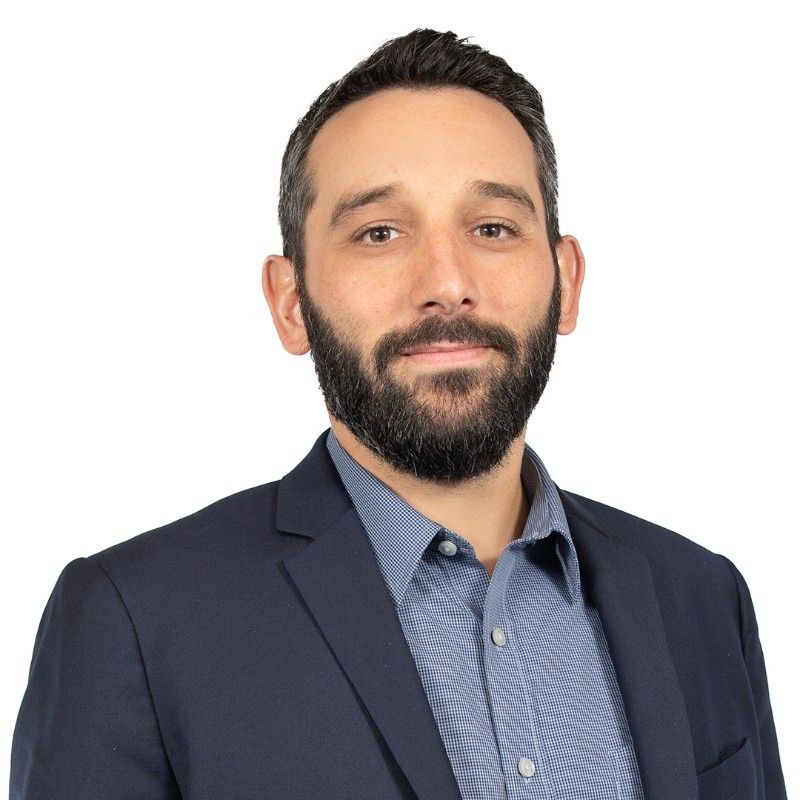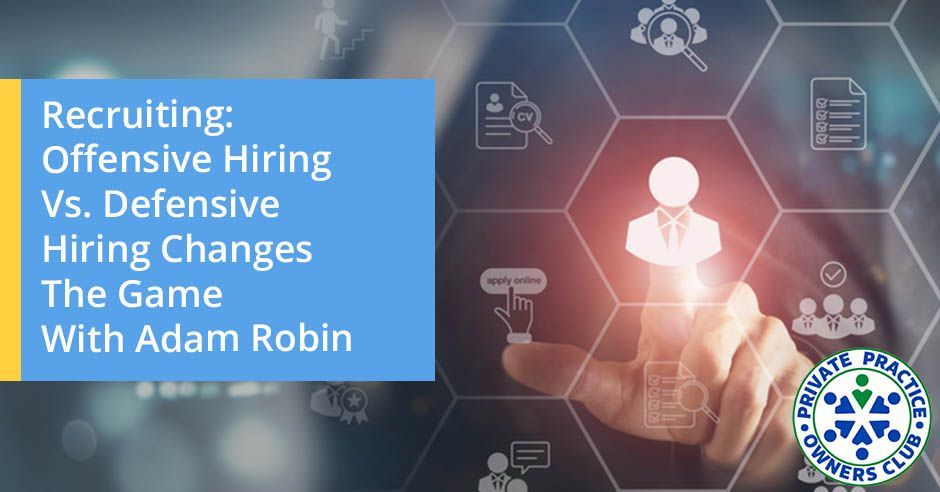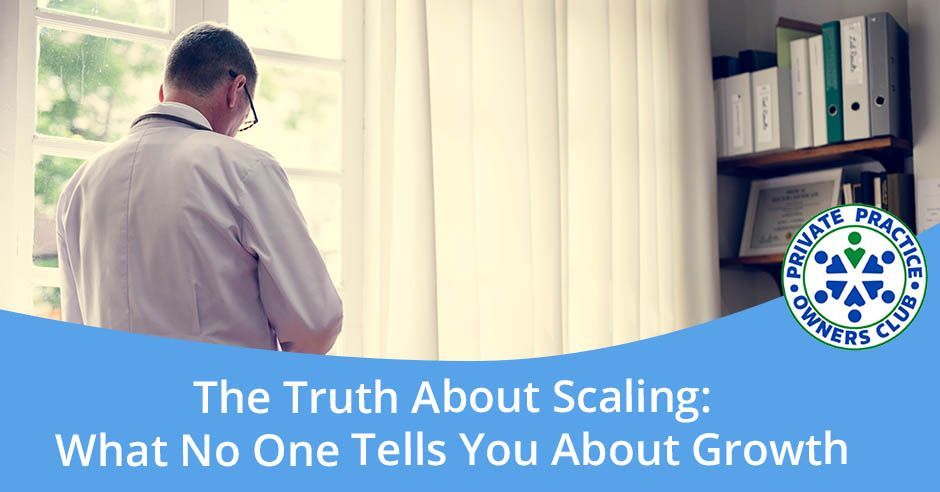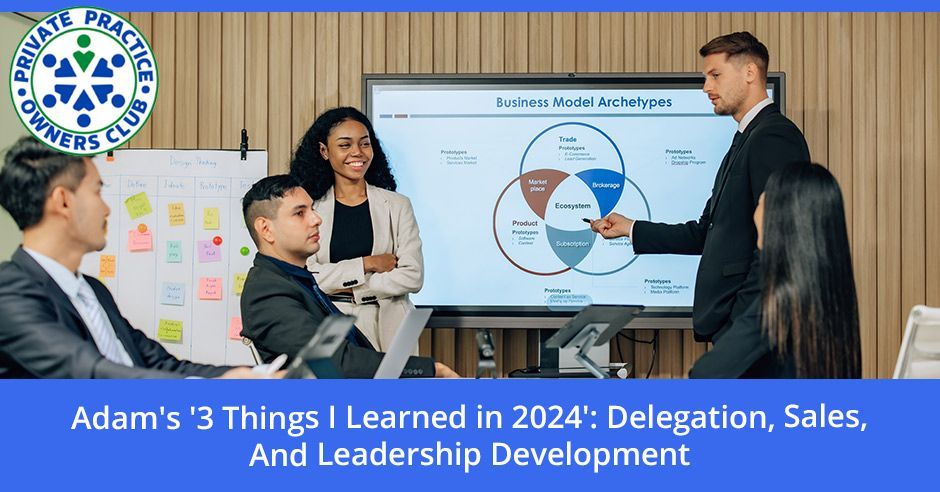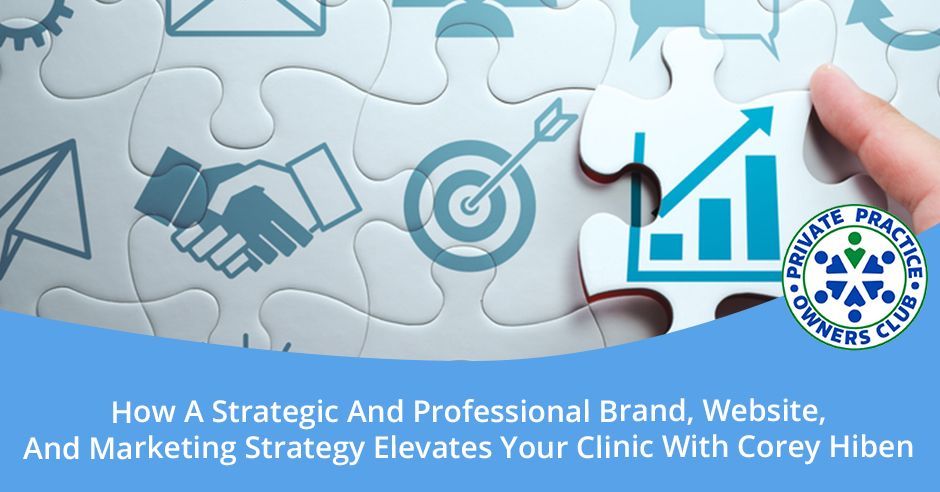Passionate about finding the alignment between humans and healthcare. Two-time start-up founder focused on providing Private PT Practices the platform and playbook to solve runaway MSK costs for self-insured employers.
How To Increase Reimbursement By Contracting Directly To Employers With Ryan Klepps Of Second Door Health

In this episode, Nathan Shields and Ryan Klepps answer burning questions such as, "What is Direct-to-Employer?", "Which employers should you target?", "How can smaller practices achieve great success by offering on-site services?", and "What is the enormous potential of this model?" So, buckle up for an electrifying journey into the future of private practices!
Get ready for an exhilarating discussion as Nathan Shields talks with Ryan Klepps, the co-founder and CXO of Second Door Health. They explore the incredible potential of the Direct-to-Employer model in the private practice industry, a groundbreaking trend that has the power to transform the way private practices operate.
During their conversation, Nathan and Ryan dissect how clinic owners can bypass third-party payers by teaming up directly with local and regional employers to provide superior care and outcomes. They also explore the ideal types of employers to focus on and reveal how even small clinics can thrive using this innovative approach.
Don't miss " How to Increase Reimbursement by Contracting Directly to Employers with Ryan Klepps of Second Door Health" – it's packed with valuable insights for private practice owners!
Want to explore how we can support your private practice? Book a call with Adam: https://calendly.com/adamrobin/dr-adam-s-30-minute-connection
---
Listen to the podcast here
How To Increase Reimbursement By Contracting Directly To Employers With Ryan Klepps Of Second Door Health
Introduction To Direct To Employer Model
I have a guest who is going to bring up a topic that I’m excited about because it’s something that we’ve been hearing about at Private Practice Series Conferences for the APTA. That is the Direct-to-Employer Model. Ryan Klepps, the cofounder and CXO of Second Door Health is joining me. Ryan, thanks for joining me and explaining to us a little bit about this opportunity that’s before us.
Thank you, Nathan. Justin Moore at the APTA is an advisor of ours. We’ve been working closely with him on all things direct-to-employer.
For people who are tuning in to this, the phrase direct-to-employer might be new to them. Even if it’s not, can you give us a breakdown? You’re an expert in the industry. Tell us a little bit about what direct-to-employer means as it relates to physical therapy owners, OT, or speech therapy owners who might want to delve into that space.
To start it’s why would you want to go direct-to-employer and what the opportunity is.
What do you mean by direct-to-employer?
Direct-to-employer is rather than just going through traditional third-party reimbursement, you are going out to a local or regional employer and you are contracting directly with them. We’ll talk about what types of employers should you target to provide streamlined access to conservative care to deliver more of a PT-first model that gets better outcomes and reduces costs.
That’s what we do well and what we’ve been shouting from the rooftops for a long time. That foundationally is direct-to-employer. You’re foundationally changing the health plan benefit package as an employer to incentivize conservative first care, provide preventive services, and look at things from a population health perspective versus seeing and treating patients.

These local and regional employers will use a third party like Aetna, Cigna, or Blue Cross Blue Shield as the benefits health care benefits package for their employees. You’re saying, “I can save you money or this is a better benefit to the employees if we carve the physical therapy portion out and work directly together.” Is that what we’re talking about?
There are a lot of different ways to do it. Let’s talk about the who. The primary targets are employers that are self-insured and not fully insured. The distinction is nuanced, meaning if you’re an employee of a business, you don’t know whether or not that business is fully insured or self-insured, but the opportunities are very different.
Self-insured employers are key in the direct-to-employer model, offering PTs more control and better rates.
In a fully insured model, an employer says, “I pick Blue Cross Blue Shield?” This means they get the shelf Blue Cross Blue Shield plan with the shelf Blue Cross Blue Shield provider network. The employer has to pay part of the premium to Blue Cross Blue Shield. Blue Cross is both the administrative layer, meaning they’re going to take care of all the claims and they’re the bank account. They pay out the claims.
The difference is when you go self-insured, you still work with a traditional insurance company, but they are a TPA or a third-party administrator. If the insurance company traditionally is the administrative layer and the bank account, when you go self-insured, the Blue Crosses of the world are now the administrative layer and you as the business are the bank account. You’re the at-risk entity. That means all the claims that are paid out impact you. You have to pay them out. Rather than your premiums going up, if you do run-away healthcare costs, it could cripple your business. It’s the number one.
The number two cost for every business after salary is health care. For self-insured businesses, it’s a real problem. The reason why people go self-insured is they’re sick of their sick of not having access to their claims data and understanding where their spending is coming from. They get a notification from Blue Cross at the end of the year when you’re fully insured. It says, “Your premiums are going up 15%. Don’t ask why. We don’t have to tell you. Forget about it.”
When you go self-insured, you are completely in control of your visibility into your claims data and you could make changes to your benefit package to do a number of things, and provide better benefits so that you can differentiate and have better acquisition and retention of your employees. You might want to put in programs that reduce your overall healthcare spend or provide wellness opportunities for employees. There are many reasons why employers are looking to make benefit-level changes. Talking with the employer and understanding where their pain point helps you then come into position and what a potential solution for that is.
These employers and companies, are they typically a certain size, in which this model works better for them? These are the types are going to target, but I’m thinking in my mind what company could I envision would be a self-insured model?
Sixty-five percent of US workers are covered by a self-insured plan. The latest numbers are about 150,000 self-insured businesses in the United States. There’s a lot of them and traditionally, self-insurance only made sense for the big folks that were over 2,000 or 5,000 employees. Over the last five years, that has shifted because of the rising costs and the challenges of doing business, self-insured. A math equation makes more sense than a down market. About 60% of employers if 200 employees to 1,000 employees are self-insured, it’s over 80% if you have more than 1,000 employees, and over 90% if you have more than 5,000 employees.
Can you say that’s increasing?
Drastically increasing. The highest rate of folks going into a self-insured model is small. Thirty percent of employers that have 50 to 200 employees are not self-insured. That was not even close to that. Now, it’s even making more sense on the small end. We’re not talking about entities that you might not think about. They are employers but municipalities, school districts, and unions. All of those are almost ubiquitously self-insured, so local police and fire, a local school district, and your city government. All of those are in a self-insured plan where they can make the changes they want to their benefits. Those hyperlocal opportunities are huge for PT practices.
Greenfield Opportunities For PT Practices
Do you find that they are open to these conversations with private practice owners? Do they already understand or are they searching out looking for opportunities like someone to come to them and work directly with your employees?
It’s not a always yes. What I’ll say is every market is on a maturity arc where more folks are aware they have a problem and want to solve it. This market has been maturing for a while over the last 10 to 15 years. Are you familiar with digital MSKs, Sword Health?
I’ve heard of Sword. These are well-funded organizations. They’re especially on the virtual end.
Tangent and Sword both independently raised about $1 billion a piece. These are Silicon Valley businesses likely to go public. Foundationally, what they do or what they did, their model is changing a little bit, but they recognize that self-insured employers have a problem. They built a technology solution and hired a bunch of physical therapists. Others are hiring health coaches and rehab providers. They went to self-insured employers and started with the very large ones. They said, “You have a healthcare cost problem.” The employer says, “Yes.” “You have an MSK cost problem.” MSK is the top three cost for every employer, regardless of industry. It’s the number one spend bucket for 75% of employers.
When you say MSK, that’s musculoskeletal, but these are not workers' compensation claims. These are strictly outside of workers' compensation claims. Someone sprained their ankle or hurt their back not on the job, but they’re getting care for that. It’s not a workers comp situation.
That’s where the biggest opportunity is, on the group health side. On average, 75% of the cost comes from regular claims and 25% comes from workers comp. People need workers comp solutions, but let’s be honest. If somebody needs to work comp solution, PT is best position to service it. You should go and win that deal but what’s happening on the work comp side is what’s happened on the payer side. It used to pay well and now, it’s starting to get commoditized.
These large networks owned most of the deals and sent them to the people who were willing to get paid the least. We’re seeing the rates of reimbursement drop down and there inherently lies the problem. The practice doesn’t have the leverage. They don’t have the control and contract. It’s going through a network.
They either have to take a case at a certain rate or not take it at all. There are opportunities to contract directly with an employer on work comp. A lot have done that, but the vast majority of the opportunities are on the group health side because that’s where the cost is for the employer and whether they’re looking for solutions.
What these digital MSKs have done is they validated you have a health care problem and an MSK cost problem then they said, “I have a solution for you. It is early and consistent access into conservative care because if you start with conservative care like physical therapy, your cost is going to be reduced by on average 60%.” This is all the data we know. In every PPS conference, we’ve been screaming this from the rooftop for a while and we’ve been trying to negotiate with payers to say, “We get better outcomes at reduced costs.”
Early access to PT leads to better outcomes and reduced costs, a win-win for employers and patients!
We’ve been selling the wrong thing to the payers because they make more money by healthcare costs going up and premiums rising. You have been selling the value props to the wrong stakeholder. What Hinge and Sword have gotten right is they’ve gone to the people who care about quality and cost. They say, “We can we can put this model in. It's conservative care first. We’re going to reduce your surgeries, your opiates, and high-cost pharmaceuticals and advanced imaging.” People are going to get PT first and they’re not going to need that stuff.
They’ve done a great job selling. They’ve built a massive sales organization. The good news is they sold to like 3,000 or 4,000 employers. I told you there are 125,000 self-insured employers in the US. They are traditionally sold to big employers, which means the local municipalities and school districts. Those are still greenfield opportunities, but we’re starting to see them looking at these types of solutions. What’s been encouraging is while the value prop is landing, the digital MSKs can sell. They struggle with driving the return on investment because they can’t get more than 3% of people annually to use the thing because consumers don’t want digital-only PT.
When you say digital-only, do you mean virtual visits?
Yes. Their technology is mostly more self-service. They have a lot of algorithms and AI that are going to drive when a PT taps in. They are doing a handful of actual virtual visits, and then it’s a lot of self-service and self-progressing back pain programs. It is a different spin on PT. They’re starting to layer things in like mental health, stress management, and lifestyle modification. All that good stuff.
If someone has a niche that is a pelvic floor or pediatrics, or as you said, mental health, maybe there’s a social worker that has their own practice or a PT that has social work as part of their practice. Are those additional benefits that these same employers are looking for?
Yes. You can go looking, not to keep harping on the Hinges and Swords but they’ve launched their pre and postpartum programs and advanced strengthening programs. I met with a PT practice owner in Arizona who has built his entire practice on direct-to-employer. He employs a primary care doctor and a mental health specialist to provide comprehensive services to local police and fire that is not just PT because he’s not selling PT.
Benefits Of The Direct To Employer Model
He is selling a better benefit, reduction in MSK cost, and streamlined access to the right level of care with a lot of preventive services layered on top. When somebody has done with the academy, they come in and he’s assessing how they’re putting on their gear and talking about it. He’s adding a lot of value outside of if you just get hurt, you’re coming into PT. Now, what practices can do is negotiate directly with the employer a better rate typically than what you would get from third-party reimbursement, which we know keeps going down.
They own that contract. Nobody can come in and cut it by 15%. If they have the sophistication, they can prove MSK cost savings and can increase the value of the contract significantly where it can become a real revenue driver. We all know the problems the industry is facing related to reimbursement. If it keeps going the way that it’s going, we’re going to continue to have massive provider shortages.

I don’t know how practices around a profitable business on pure reimbursement. It’s not going to change unless we change it. We’ve already shown that going into the payers isn’t going to do it. If you can get meaningful volume through a direct-to-employer contract or a handful of contracts. Prove out the value. That makes it easier to sell more, drive a better net rate, and truly work with groups that have aligned incentives where they are looking for better access and lower costs. You can provide it. You just got to deliver.
I’m wondering about those who might be in the single practitioner clinic. Maybe they have a singular location with maybe 2 or 3 providers, or whatever healthcare services that they’re providing and don’t have an MD on staff or social worker. Are they behind the eight ball simply because they’re a singular location and maybe a little bit smaller? Do they have any leverage to go and pursue contrast like this or do you need to be a certain size in terms of the number of facilities covering your certain demographics or geography of space so that it’s more attractive to these employers?
Yes and no. That group that I talked about started with two PTs and they’ve scaled into the model they have now because they were successful initially with him and his business partner. They only have one location and they go on site.
Do they go on-site to provide services or assessments?
Services and assessments.
They can provide that on-site, as well as in their own facilities.
The Importance Of Targeting The Right Employers
What I’ll say is it’s going to be difficult for a single practice to win a 10,000-employee group that has regional offices all over the country because people want uniform benefits. They don’t want to do something in one office. The way I look at it is you have to understand where you’re fit to win. If you’re a single location group, most of the police and fire in your town are right in your town. Most teachers live in your town. The owners of most small businesses live in your town and that’s where you can go focus. That’s where we’re seeing the 1 or 2 location groups win.
There might be a large manufacturing. I grew up in Bristol, Connecticut. ESPN for some reason is there. You’re not limited in that capacity. What you can try to do is lean more on-site services as opposed to triage into a brick-and-mortar facility. Groups with many locations have the upper hand. The fact of the matter is that a group has 70 locations. Are they going to go target your local municipality? Maybe at some point, but every PT group is fit to win at a certain level.
How To Approach Municipalities And Who To Contact
As long as they know their limitations and keep it appropriately targeted towards those that they could work with. How open are these municipalities to negotiating like this? More specifically, are they open? Who would you talk to? Who do you even start with?
They are open. We’re talking to a number of school districts as a lot of the customers that we’re working with. We know PT practices that have school district, police, fire, and entire town contracts. We have a customer that has an entire county as a contractor. That’s the other thing. It’s direct-to-employer. As I said, the digital MSKs have proven that this can be done but there have also been many practices that have been doing this for a number of years and have landed incredibly meaningful contracts. The approach is clear. There’s value to be delivered. It’s about going ahead and delivering on that value.
If you’re talking about going into agency, who would you approach? Is there a common title that you’re looking for?
Unlike the work comp side, and this is an important distinction. If you’re selling work comp versus a group health benefit, an MSK management solution, it’s two different doors with two different stakeholders. A common mistake that groups make is they say, “I have a work comp relationship. I’m going to go talk to the head of safety and pitch this broader program.” The fact of the matter is the head of safety almost falls over because you say, “Early consistent access into PT.” What the head of safety cares about is reducing reportable claims and keeping people out of health care.
“We don’t want more visits here.”
It’s not going to resonate with them and that’s very commonly where the pain point and challenge is. Who you’re selling to is different and it takes practice to figure that out. Who you’re selling to is the person in charge of benefits.
That’s somewhere in HR, probably.
VP of total rewards, BP of HR, director of benefits, and benefit analysts. That’s your primary stakeholder.
To put some real numbers behind it, if someone is averaging $90 a visit on reimbursement, could they realistically be seeing significantly more than that? What are some of the numbers you’re seeing on average per se?
Well into the hundreds. Over $100 is what I’m seeing per visit. I’ve seen contracts at $150 an hour. I’ve seen capitated case rates negotiated at $1,500 a case. That’s nice because then you got to get people better and faster. You can pocket the difference. You could layer on technology and say, “We’re going to do some virtual stuff,” and only see people six times in person. You’re in control more of your destiny. It’s not about revenue per visit. You can go flip and think about delivering mechanisms and how to get more profitable and deliver on value.
Direct-to-employer contracts offer PTs higher reimbursements and more control over their practice.
Where I’ve seen the most upside is customers who say, “I want to analyze your MSK cost before we start this and afterward. If we show MSK cost reduction or healthcare cost reduction, I want to share savings rolled into my contract from there on out. We reduce healthcare costs by 15% or 20%. We’re going to take half of that that’s going to roll into a monthly fee.” Now, you’re getting paid for what you treat and the services you provide, but then the value you are providing.
There are a lot of different pricing models. We could spend the entire time talking about how to package and price this. The short of it is if you talk to the folks who have been doing this for a while, there’s a reason why they can continue to do it and lean harder into it. It’s because not only is the payment better, but often contracts are negotiated at no copay, no deductible, no need for authorization, and no visit caps. It is a reduction in administrative burden where somebody can come in and be seen because you’re illustrating to the employer that you’re not just going to juice visits. If you just do that, you’re not going to get the results of reducing MSK costs.
The alignment of incentives is nice here. You can roll a lot of those things in, and somebody has no copay and no deductible. If they see you, but it hits their copay and deductible and if they go out into their standard plan, you’re going to drive more people into your practice, which is a good thing than a higher rate of reimbursement and reduced admin burden. It’s a trifecta. It’s a win-win-win.
Why Hasn't The Industry Embraced This Model More?
Talking about win-win-win, that was what I was thinking in my head. There’s a benefit for every player in this scenario and you alluded to it and that is the employee if you’re negotiating something in which they don’t have a copay or coinsurance or deductible. If they come and see you, that’s a benefit. If you’re on site then you can work with them during their business hours and they don’t have to come in after business hours or take work off and get a babysitter to come and see you for physical therapy. Huge win.
No one wants to do all that crap to go to physical therapy, honestly. It’s a huge win. Save the employer some money on their healthcare costs, whether that’s MSK or mental health. You name it, anything. For you, added revenue or increased revenue per visit especially if you break it down in any different way, but to get a percentage of the financial benefits of providing that service for the company. It’s a huge windfall. A lot of great opportunities there. From a bigger picture, why hasn’t the industry been doing this more vigorously?
The last five years have pushed the industry to a bit of a breaking point. Pos-COVID costs have gone up by about 10% or 11%. Reimbursement on average has gone down by 1% and we have never been reimbursed a ton but we’ve always found a way to make it work. We’ve always found a way to be profitable. We’re seeing that inflection point. United for a long time has not been a profitable payer but the cost of doing business now is so razor-thin that we must do something.
Some practices are leaning into cash-pay services but there’s only a certain market for those people. They have to have a high net worth. They do not necessarily want to go within their health plan and stomach high costs but there’s a place for direct-to-consumer for sure. We’ve been paying in our heads against a brick wall for 10 to 15 years more go into payers and trying to sell value and it hasn’t worked. People haven’t been doing it very vigorously in the past because they didn’t need to but I think they need to now.
PTs, it's time to embrace change and explore new models like direct-to-employer for a sustainable future!
They’re seeing the need. I get it. I’m sure people got a ton more questions like, “How do you approach this? What do you say? How do you negotiate?” Tell us a little bit about Second Door Health and where you guys come in.
Myself and one of our other founders, our CEO, Scott. This is our second run at building software solutions for the physical therapy industry. We built a company called Strive Labs that built the first patient relationship management marketing automation platform for physical therapy. It ended up being used by about a third of the industry. We were acquired by WebPT in 2017, and we were at WebPT for a while before we moved off and started this venture.
Everything we’ve talked about is because we feel like the impetus is now and PTs are at a critical point. We built a software platform that helps to administrate direct-to-employer contracts end to end because there are a lot of pain points when you have multiple contracts. How do you keep your service lines lined out if you’re invoicing an employer directly? Your EMR and billing system isn’t set up to do that. How do you drive enrollment from employees, put enrollment marketing plans, put it into play, and collect the data where you could show the employer that you’re reducing cost and getting better outcomes?
There can be a lot of overhead. To start, there doesn’t have to be that much. Get a contract and figure it out. Every practice that has done this and done it successfully, Rob Worth who’s one of the folks who is doing a lot of the direct-to-employer stuff at PPS. I’ll paraphrase him but he said, “I stumbled and failed my way into success.” He’s being modest.
He’s done a lot of right things along the way but he’s gotten out, went and did it, and figured out a lot of these solutions. How do I go do a lot of these things? Out of the box, we want to make it simple to administrate these contracts for practices, both direct-to-employer and also direct-to-consumer. With our early customers, we are providing a ton of professional services to help them go out and win contracts in their area.
Training them on what to say, who to talk to, how to approach them, and what those people want to hear so that your presentation falls appropriately on them.
I’m wearing the “More Physical Therapy” t-shirt. I’m leading the sales pitch.
You’re coming in as part of the team and helping them negotiate.
Myself and our head of provider partnerships, Jake Nero, that’s our full-time job. How do you prospect in your area? What is your sales pitch? What is your deck? Over time, folks feel much more comfortable leading the process themselves, but we’re getting in and pitching. Business-to-business sales are different and difficult. You’re going to fail far more often than you succeed in business-to-business sales, but it’s about the process and optimizing that process so that you could learn and scale.
Jake and I have been doing business-to-business sales collectively for 25 years. Each of us has 12 or 13 years apiece. We at least know the mechanics of how to build a B2B sales org. What we lack is the local connectivity and where your unique value is. Most practice owners, I talked to one who said, “Me and my partners were born here and we’re all going to die here.” While that’s grim, that’s meaningful. That means you know people, the entirety probably, and folks who have moved and prominent positions at employers in your area.
That leverage is what can get you in the door, but then what? That’s where we want to come in and help. We won’t do that forever, but right now, we feel like it’s important to get the wheels spinning. We want to give people like, “Here’s what you need to do without sitting on a weekly meeting with Jake and I.” That’s what we’re doing at Second Door.
If you’re tuning in to this episode in 2024 or 2025, then that might be an option that they could leverage and that is you helping them do that. If you were talking about 2026, maybe or maybe not.
Our hope is that by 2026, we have it still locked in that you sign up and you enroll in direct-to-employer academy. We can guide you through how to do the stuff and give you a lot of collateral that you need.
The Challenges Of B2B Sales And The Importance Of Networking
Last question for me, how do people get a hold of you?
Ryan@seconddoorhealth.com. You can email me.
Do you have a website that they can also look into?
Are you on any social medias?
No. As a business, we have a LinkedIn. I swore off social media eight years ago, so you won’t find me on there. You will find me on LinkedIn, but nowhere else.
I got you. Lastly, how much time does an owner need to set aside for something like this? I’m assuming an owner that’s treating full-time is going to have a hard time adding this to their plate. What do they need? Maybe like 5 or 8 hours a week at least to get it started, but then be capable of taking on more hours if they want you on site.
Going out and getting contracts is the hardest thing. I’m not going to sugarcoat it. It’s difficult because you are starting out from scratch and you likely don’t know what you’re doing. You want to get as many reps as possible to be able to hone and sharpen that. What I’ll say is if you’re thoughtful about mapping out your network. Who do you know? You can get many at bats pretty quickly.
It’s not what businesses do I know? It’s who are my neighbor’s? My son’s on a soccer team. Who am I close with? That’s in my network. That network, I’m telling you when you go the warm route, you will get a meeting so much faster and more often than if you’re trying to get into the local school district and you don’t know anybody. From a time spend standpoint, you’re going to have to spend the most time on the front end, making sure that you have the sales collateral, your pitch deck and you’re sharp in terms of what you’re offering.
From there, if you’re leveraging your network to get quick wins and meetings, you go focus in on where you have the leverage. You’re probably putting in 4 or 5 hours a week if you’re focusing on five opportunities in any given time. As that starts progressing and you get closer to having a contract in place, you then have to think about, how do I operationalize that? If you’re a solo practice owner, you’re the only person, that’s probably a time when you make sure that your contract is worth enough where you can bring somebody on because you do have another side of the business that needs to keep running and you don’t want to break.
The Potential Of The Direct To Employer Model To Transform The Industry
We have folks who have a contract and say, “We’ll hire a PT full-time on-site for you.” All the way down to, “We’re going to be there once a week for a couple hours.” You have the ability to structure in a way that works for where you’re at operationally. There are some practices that are not that large that have gone completely out of network and don’t even see public. They focus on their 5 or 6 employer contrast that they have. It’s their business. It can go to 100% of your time, it could be almost none if you go into contract with a couple of small employers and put it out there.
It is something that’s going to challenge those people who are complaining about the decline in reimbursements. You can either sit and complain or you can maybe create new opportunities. You got to pursue some other avenues. We’re at a junction point as you said, this inflection point where we have to do something different. It’s a number of opportunities you can take advantage of. We’ve talked plenty about going out of network and whatnot for those lower payers, but this is another opportunity to improve reimbursements that we want.
We should go out of network with the people who are egregiously reimbursing us, but going completely out of network takes you even further away from the leverage points because you can’t go renegotiate with a payer. What I see happening in this industry over the coming years is if enough practices can get employer contracts, they can show reductions in MSK spend, and employers demand these types of solutions, the TPAs are going to make these a standard offering and bake the payment models and the like into their offerings.
That will change the reimbursement climate completely and it facilitates a true PT is the primary care for MSK. That’s the model we’re implementing. If we do a good job of it, we can bring the payers to the water or some to drink a little bit and see a much more sustainably growing industry.
Thanks for all of the explanations and for your time. I highly encourage people to reach out to you, especially to see what you can provide them. Thanks for your work with the industry. This is great.
Nathan, I appreciate it. Thank you for your work at the industry too. It’s been a pleasure getting a chat with you.
Thank you.
Important Links
- Second Door Health
- https://PPOClub.com
- Ryan@seconddoorhealth.com
- LinkedIn – Second Door Health
- Ryan Klepps – LinkedIn



